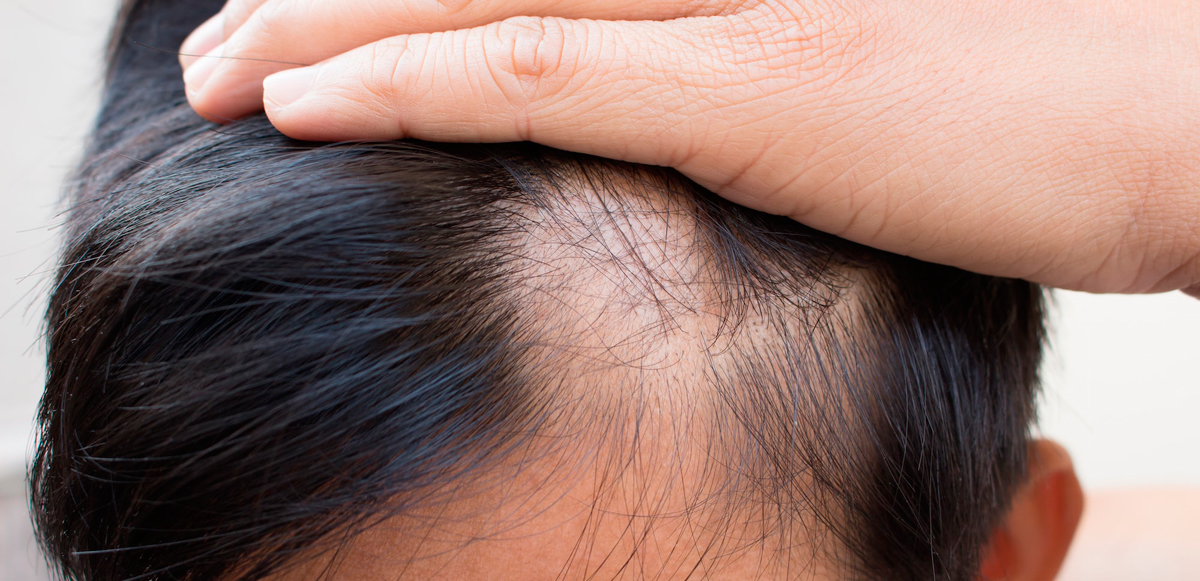

Androgenic alopecia, which is also known as pattern baldness, is a genetically determined and progressive form of hair loss occurring on the scalp. The precise causes of androgenic alopecia are not fully understood, but sensitivity to the actions of dihydrotestosterone (DHT) in the hair follicles is known to be a major factor. Androgenic alopecia is most often used to refer to male-pattern hair loss as androgens and they are a type of male hormone. As such, female-pattern hair loss is a more appropriate term to describe progressive hair loss in women. Treatment for androgenic alopecia consists of both surgical solutions and medical therapies that can help men and women of all ages slow or reverse hair loss at the temples and crown.
GOOD CANDIDATES for androgenic alopecia treatments are:
Patients who are NOT GOOD CANDIDATES include:
Treatment for androgenic alopecia consists of either surgical solutions or medical therapies.
Surgical solutions for pattern baldness are typically classed under two types:
FUE and Strip surgeries are minimally invasive outpatient procedures performed under local anesthesia. Hair transplant surgery uses a patient’s own natural DHT-resistant terminal hairs to restore the thinning or balding areas on the scalp.
With the FUE procedure, hair follicles are removed one-by-one from the donor site. The hair follicles are then transplanted individually to the thinning or balding areas of the temple or crown. If done by a master hair restoration specialist, this method leaves no visible linear scar.
With the FUT or strip method, a thin strip of scalp is removed from the back of the head containing numerous hair follicles. These follicles are then transplanted one-by-one into the balding area. This method leaves a very thin linear scar at the back of the head which is rendered non-visible once the hair grows back.
A hair transplant will normally take five to eight hours to perform.
Medical therapies for the treatment of androgenic alopecia may be classified into four types:
Minoxidil, finasteride and low level laser therapy are the only FDA-approved medical hair restoration treatments currently available on the market.
The RECOVERY time for hair transplant patients is very minimal. Most patients resume normal activity within a day or two. Beyond this, there is no significant DOWNTIME to be observed. Tiny crusts will form where the transplants have been placed and they usually shed within four to seven days. The small hairs in the newly transplanted grafts normally shed two to four weeks after the procedure and permanent hair growth begins in eight to 12 weeks.
The RECOVERY time for PRP patients is minimal to none. A patient may resume all work or social activities immediately after the treatment
Hair transplant (surgical solution) patients should expect significant cosmetic hair growth within six months and full hair growth within nine to 12 months. One or two procedures are usually enough to treat a specific area of hair loss. Potential future hair loss is taken into account when any hairline work is performed. The initial consultation between the patient and surgeon helps to individualize the procedure to the patient. The final results of FUE and FUT are permanent.
Medical therapies to treat androgenic alopecia consistently demonstrate a deceleration in hair loss and a re-growth of miniaturized follicles. These therapies are extremely powerful and reliable tools to increase follicular density and decelerate hair shedding and loss. Medical therapies also delay the need for additional surgery.
The limitations are mainly found in the surgical options:
Surgical option risks include:
Medical therapy risks include:
It is of the utmost importance for patients to research and find an experienced and technically advanced hair restoration specialist to diagnose and treat androgenic alopecia. A veteran hair transplant physician or surgeon will be able to accurately assess and evaluate the individual dermatological needs of a patient and make a treatment plan according to the specific needs of the person.
Cosmetic Town is the premier online cosmetic surgery news and information resource. We connect patients with the best doctors for cosmetic procedures. Get the answers to all of your questions and find a doctor near you.